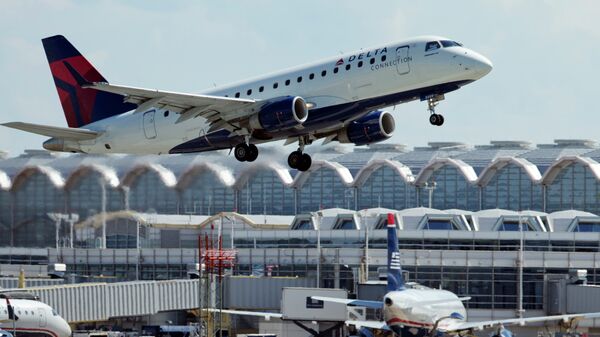MOSCOW (Sputnik) – The US National Transportation Safety Board (NTSB) has issued two recommendations to the Federal Aviation Administration (FAA), urging it to amend air traffic control procedures and update the altitude warning software in order to avoid reoccurring wrong landings.
Based on an investigation of wrong airport landings that occurred between July 2012 and November 2014, the NTSB concluded on Monday "that issuing a landing clearance for an aircraft to land at an airport when it has not yet passed other nearby airports may confuse pilots…and amending air traffic control (ATC) procedures could provide another measure of protection to avoid wrong airport landings."
The NTSB also recommends that the FAA modify the minimum safe altitude warning (MSAW) software, since its current design makes it less effective in alerting the pilot when the aircraft's altitude falls below its intended flightpath, something that is likely to occur when a plane is landing at the wrong airport.
By law, the FAA now has 90 days to accept, partially accept, or deny the NTSB recommendations.
The most recent landing mistakes that prompted the recommendations are Southwest Airlines Flight 4013 that mistakenly landed at the wrong airport in Missouri on January 12, 2014 and Atlas Airlines Flight 4241, a cargo flight that landed at the wrong airport in Wichita, Kansas on November 21, 2013.
Air traffic controllers mistakenly directed the Southwest Airlines Boeing 737, which had 124 passengers and 7 crew members on board, to a shorter (3,738 instead of 7,140 feet) runway at an airport located 6 miles away from its intended destination (Branson Airport).
Although the wrong airport landings investigated by the NTSB did not lead to injuries, the ensuing advisory is highly important, the safety board stressed, saying that its recommendations "are designed to prevent accidents and safe lives."
The NTSB did acknowledge that preventable air traffic control errors and software weaknesses were not the only factors contributing to wrong airport landings. According to the safety board, pilot and flight crew vigilance are also crucial in avoiding such incidents.
In March, 2014, the NTSB issued a safety alert offering advice to flight crews on how to prevent landing at the wrong airport.



